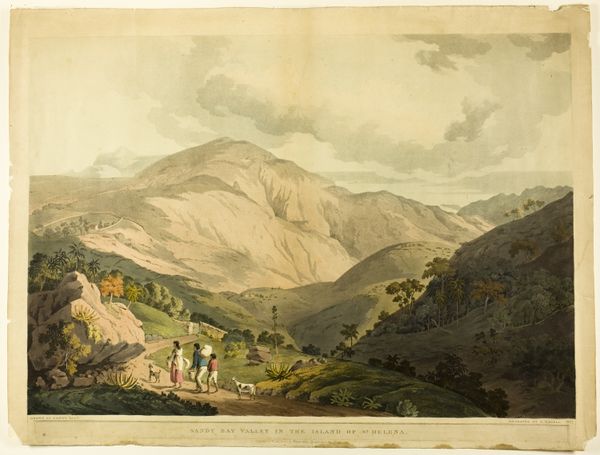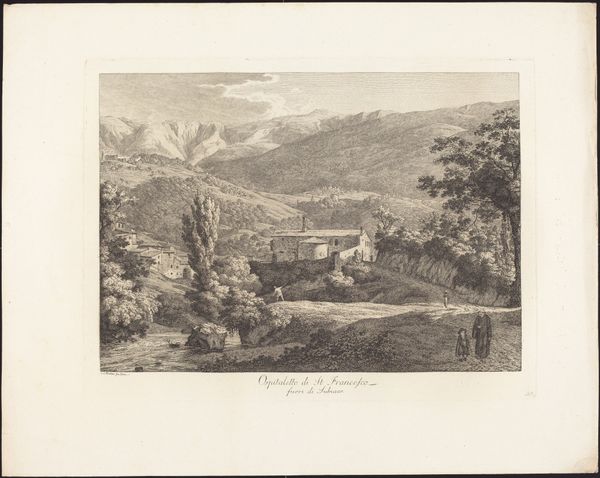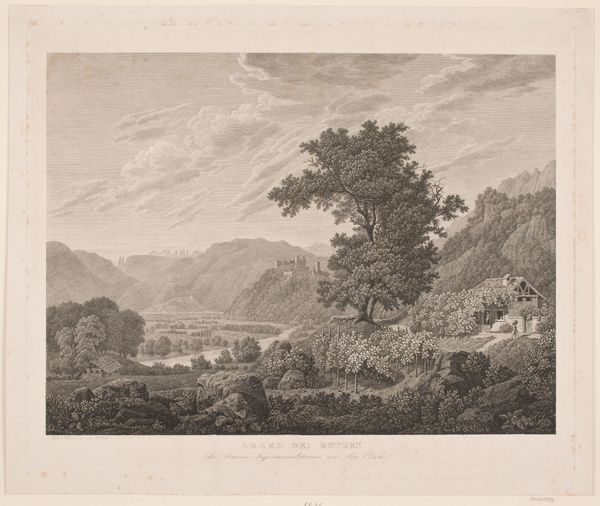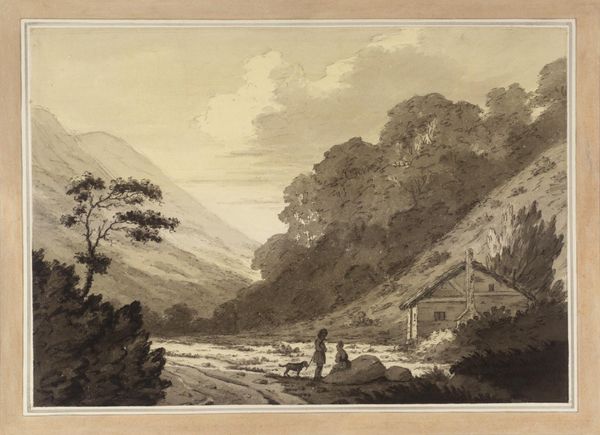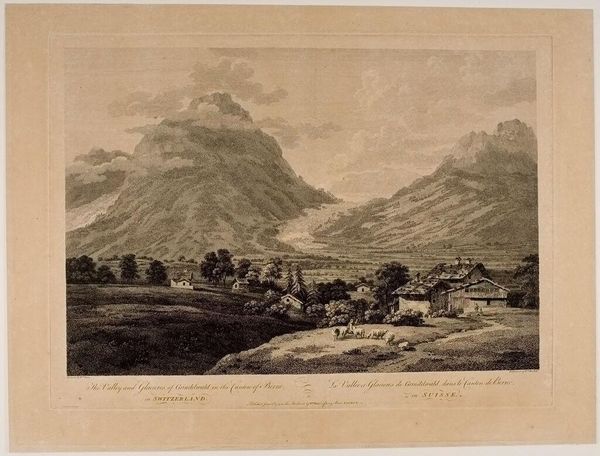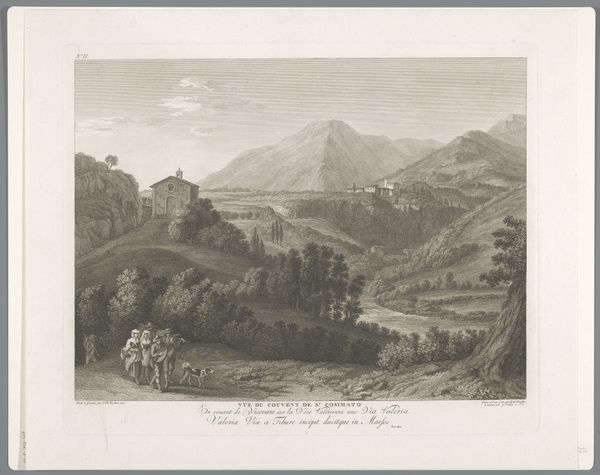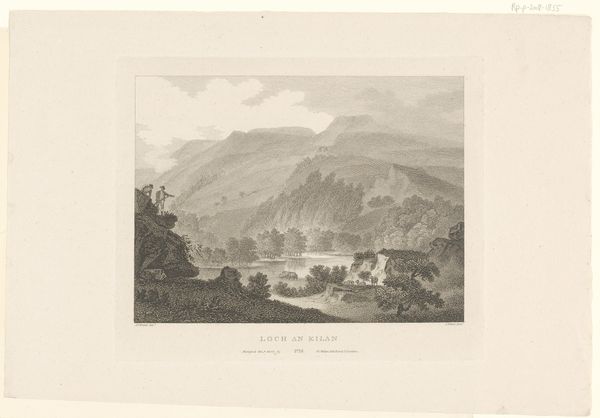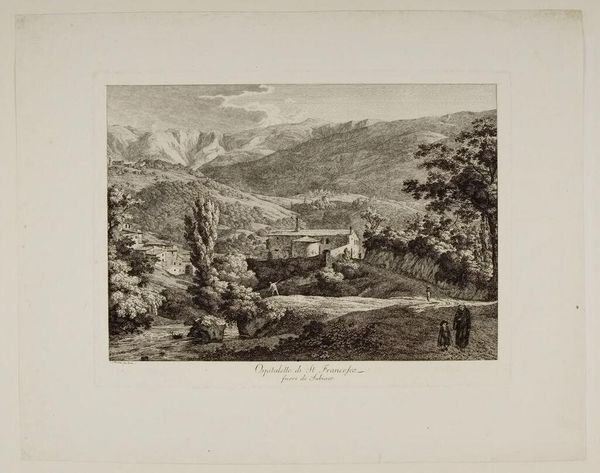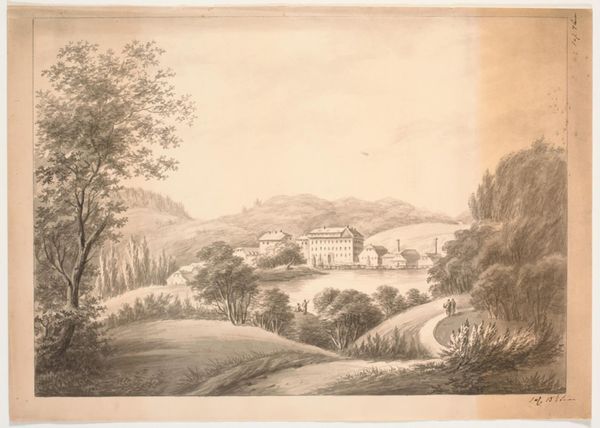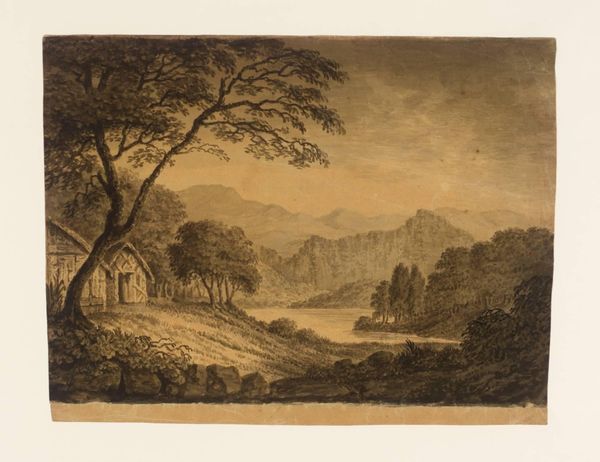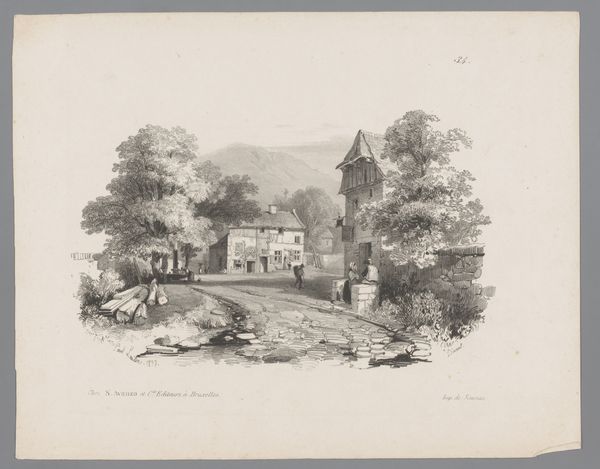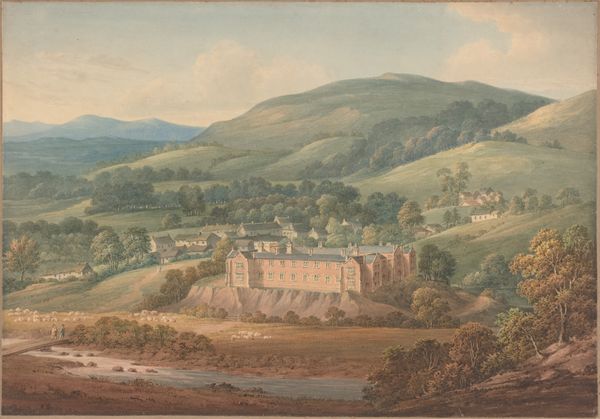
drawing, print, plein-air, paper, watercolor
#
drawing
#
water colours
# print
#
plein-air
#
landscape
#
paper
#
watercolor
#
romanticism
Dimensions: 130 × 200 mm (image); 162 × 223 mm (plate); 208 × 268 mm (sheet)
Copyright: Public Domain
Curator: Let’s turn our attention to “Appuldercomb,” a watercolor and print work created around 1794 by Piercy Roberts and housed right here at the Art Institute of Chicago. Editor: It’s surprisingly peaceful. The soft hues, especially that light reflecting on the horizon, gives everything this sense of tranquility. There’s such stillness and I'm struck by that tiny little obelisk atop the hill - like a sentinel or tiny exclamation point. Curator: Roberts was working within the well-established tradition of landscape art popular in England at the time, with its foundations firmly placed within Romanticism. Images of country houses were often commissioned or sold as picturesque mementos for the aristocracy and gentry. These works allowed for a kind of symbolic ownership and access to scenes of both natural and man-made wonders. Editor: Yes, you've got the big house in the centre. Like a stage set for some genteel drama - all poised respectability. And what I find really beautiful are these individual trees. It’s so delicate. Like seeing the world in miniature with its own weather systems. Curator: These watercolor landscapes were affordable and easily reproducible as prints, democratizing access to images of the English countryside, particularly images tied to estates of prominence, though actual land ownership, of course, remained limited. Consider this also in context with the landscape tastes of the rising middle class. Editor: Do you think this work served as propaganda then, idealizing the land ownership system? And is that the light reflecting? It makes you wonder what lies beyond. I do like the almost theatrical composition. Curator: The print indeed shows the landed estate in a flattering, picturesque manner, idealizing it. That said, Romanticism was a broad aesthetic, encompassing elements that critique social mores. But more broadly, Roberts was very interested in light and architectural perspective and you are right in seeing the theatrical stage present here. He was even employed as a scene painter at the Theatre Royal! Editor: No surprise hearing that! The architecture set against that expansive view...well, it certainly is breathtaking. Thank you. It felt a little like a quiet journey. Curator: Indeed. And understanding the context helps us see it, too, with new eyes. Thank you.
Comments
No comments
Be the first to comment and join the conversation on the ultimate creative platform.

